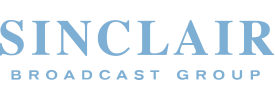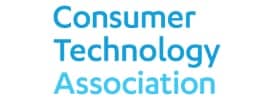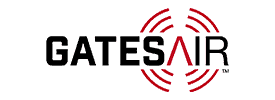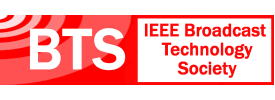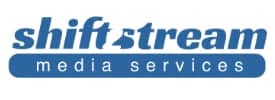- About
- Members
- Sponsors
- Subcommittees
- About Our Subcommittees
- Technology Group 3
- Implementation Team 1 – Advanced Emergency Information
- Implementation Team 2 – India
- Implementation Team 3 – ATSC 3.0 Conformance
- Implementation Team 4 – Brazil
- Implementation Team 5 – Tower Network
- Implementation Team 7 – Caribbean
- Implementation Team 8 – Automotive
- Planning Team 4 – Future Broadcast Ecosystem Technologies
- Planning Team 5 – Automotive Applications
- Planning Team 6 – Global Recognition of ATSC 3.0
- Planning Team 9 – Sustainability
- Technical Documents
- News
- Events
- Spotlight ATSC 3.0
- Contact Us
- Member Login
- Member Meetings
- Advanced Search
Search Site
Member Links
- About
- Members
- Sponsors
- Subcommittees
- About Our Subcommittees
- Technology Group 3
- Implementation Team 1 – Advanced Emergency Information
- Implementation Team 2 – India
- Implementation Team 3 – ATSC 3.0 Conformance
- Implementation Team 4 – Brazil
- Implementation Team 5 – Tower Network
- Implementation Team 7 – Caribbean
- Implementation Team 8 – Automotive
- Planning Team 4 – Future Broadcast Ecosystem Technologies
- Planning Team 5 – Automotive Applications
- Planning Team 6 – Global Recognition of ATSC 3.0
- Planning Team 9 – Sustainability
- Technical Documents
- News
- Events
- Spotlight ATSC 3.0
- Contact Us
- Member Login
- Member Meetings
- Advanced Search
Emmy® Goes to ATSC for Controlling Loud Commercials
Posted on October 15, 2014 in Press Releases
FOR IMMEDIATE RELEASE
ATSC Recommended Practice for Digital TV Hailed for Improving Audio, Delighting Viewers
WASHINGTON, Oct. 15, 2014 – The Advanced Television Systems Committee’s (ATSC) collaborative effort to address wide variations in TV audio is winning recognition with a Primetime Emmy® Engineering Award from the Academy of Television Arts & Sciences.
“We’re extremely proud that this cross-industry effort to address a nagging viewer concern has earned a coveted Emmy for the ATSC. Digital technology can be applied not only to enhance picture and sound, but also to deal effectively with the annoyance of commercials that sound louder than the programs they surround,” said ATSC President Mark Richer. “Thanks to the leadership of Jim Starzynski of NBC Universal and the efforts of a volunteer group of industry audio experts, the ATSC’s approach to loudness normalization is now utilized by TV broadcasters and pay-TV operators alike.”
The ATSC A/85 Recommended Practice (Techniques for Establishing and Maintaining Audio Loudness for Digital Television) provides the industry with uniform operating strategies that optimize the audience listening experience by eliminating wide variation of television loudness.
Responding to consumer complaints about the relative loudness of TV commercials, Representative Anna Eshoo (California) and Senator Sheldon Whitehouse (Rhode Island) introduced a bill to address the problem. Congress in late 2010 passed the Commercial Advertising Loudness Mitigation (CALM) Act that required the Federal Communications Commission (FCC) to adopt the relevant portions of the A/85 Recommended Practice developed by ATSC to address the issue.
“The concrete action by the ATSC to develop an automated method to address the issue has resulted in dramatically improved consumer satisfaction,” according to the Primetime Emmy® Engineering Award recognition, presented for engineering developments so significant that they materially affect the transmission, recording or reception of television. The Television Academy says that “for most of television’s history, viewers have complained about big differences in volume between commercials and the surrounding programming.”
The A/85 ATSC Recommended Practice provides guidelines and describes technical parameters for the transmission of commercial advertisements by a television broadcast station, cable operator, or other multi-channel video programming distributor as required by the CALM Act that was passed by Congress and signed into law by President Obama in December 2010 .
First approved in late 2009, the Recommended Practice document focuses on loudness measurement, production and post-production monitoring techniques and methods to effectively control loudness for content delivery or exchange. Additionally, the ATSC’s A/85 Recommended Practice covers methods to effectively control program-to-interstitial loudness and it discusses metadata systems and use and describes modern dynamic range control. A/85 was later updated to conform to a recommendation from the International Telecommunications Union and to add “gating” to the measurement algorithm to further eliminate wide swings in sound levels.
The Recommended Practice now includes improved guidance for measuring the loudness of surround programming in both its multichannel format and in its derived 2-channel downmix. The FCC’s rules implementing A/85 as mandated by the CALM Act took effect in December 2012.
The ATSC will pick up its Emmy statue at the Academy’s Engineering Awards ceremony during International CES® the evening of Jan. 8, 2015 at the Bellagio Hotel in Las Vegas.
# # #
About the ATSC: The Advanced Television Systems Committee is an international, non-profit organization developing voluntary standards for digital television. The ATSC member organizations represent the broadcast, broadcast equipment, motion picture, consumer electronics, computer, cable, satellite, and semiconductor industries. For more information visit atscnextgentv.vp77wsn4-liquidwebsites.com
Contact:
Dave Arland, Arland Communications: Dave@ArlandCom.com, (317) 701-0084
Posted in Press Releases
News Categories
News Archives
Subscribe
Subscribe to The Standard, our monthly newsletter. Learn More
Join ATSC
ATSC is a membership organization with both voting and observer categories. Voting members include corporations, nonprofit organizations, and government entities, and they participate actively in the work of ATSC. Observers are individuals or entities not eligible to be a voting member.
Subscribe to our Newsletter
Subscribe to The Standard, our monthly newsletter, to stay up-to-date with ATSC news and events around the world.
Site Links
Contact Us
Advanced Television Systems Committee, Inc.
1300 I Street NW, Suite 400E
Washington, DC 20005
Do you have questions about ATSC?
About ATSC
The Advanced Television Systems Committee, Inc., is an international, non-profit organization developing voluntary standards and recommended practices for digital terrestrial broadcasting. ATSC member organizations represent the broadcast, broadcast equipment, motion picture, consumer electronics, computer, cable, satellite, and semiconductor industries. ATSC also develops digital terrestrial broadcasting implementation strategies and supports educational activities on ATSC standards.
© 2024 ATSC









